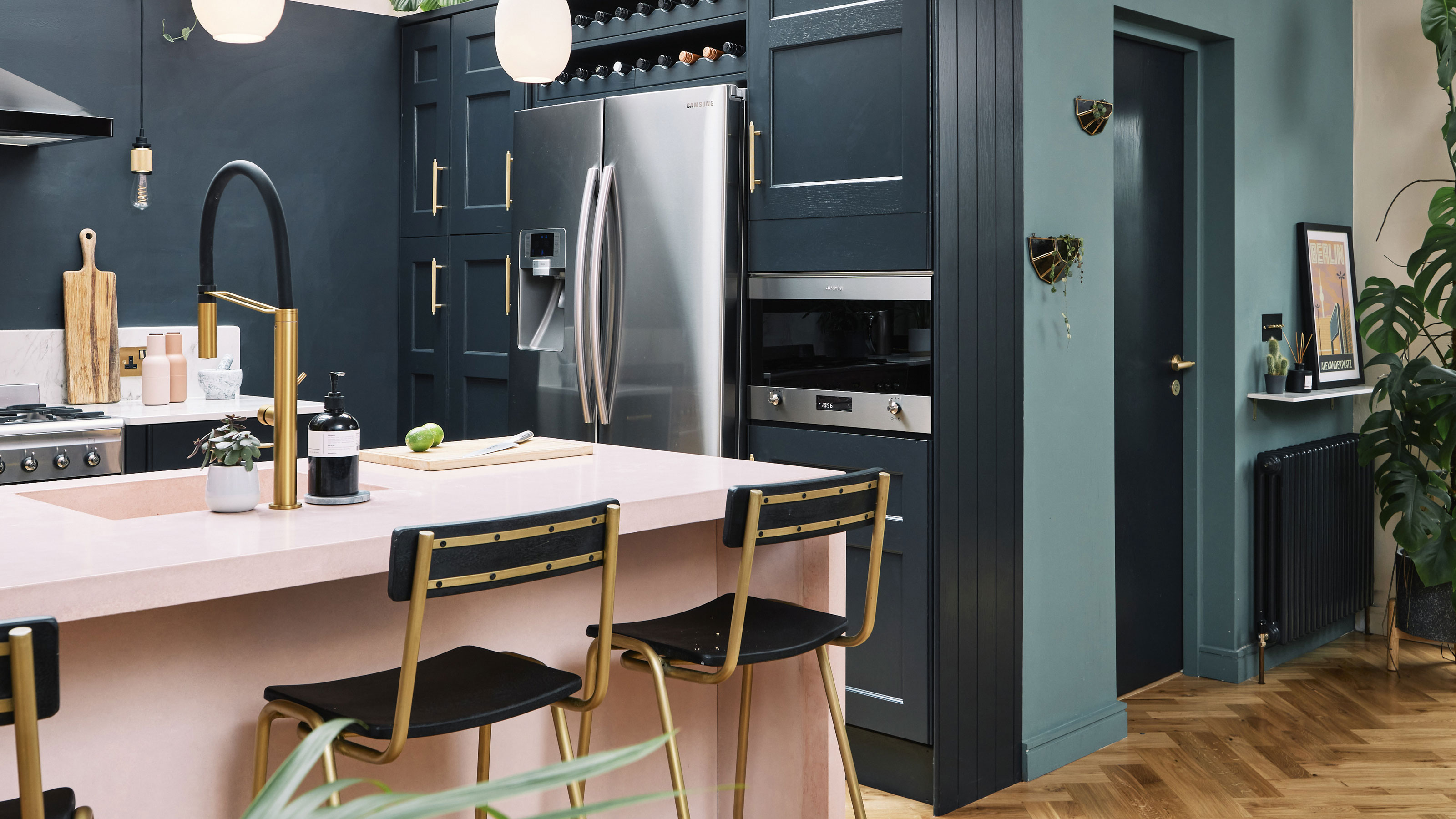How cold should a fridge be?
We ask fridge-freezer experts what the optimal temperature is – and how to check it


The most energy-guzzling home appliances are the washing machine, dishwasher and tumble dryer, according to the Energy Saving Trust. But the fridge is next on the list, whirring away all hours to keep our weekly food shop fresh.
With the squeeze on the back pocket very tight right now, you might have wondered about turning your fridge down a bit to save some energy at home. So, how cold should a fridge be? And how do you check the temperature?

How cold should a fridge be?
There's no perfect temperature because it depends on what you keep in your fridge and how much food is being stored. As a rule of thumb, you should keep your fridge between 3 and 5 degrees Celsius.
This is in line with advice from Lara Brittain, Kitchens Expert at Currys and the experts at KJ Refrigeration. 27% of Ideal Home readers didn't know that this was the ideal temperature to set your best fridge freezer at to stop food from spoiling and help them maintain the most nutrients.
Check that the thermostat is on the right setting, as it can easily be knocked when putting food in the fridge. Whether you can put the fridge next to the oven is a commonly asked question when it comes to kitchen layouts, and it ultimately depends on how modern and well-insulated your fridge is.

There's no one temperature fits all, though, with some experts arguing that the temperature should be slightly lower. 'If you want to keep your food in good condition for the maximum possible time the temperature in your fridge needs to be between 0°C and 5°C,' says Carrie Bell, Head of Marketing at fridge brand CDA.
'Anything over 8°C and you face a safety issue as most harmful bacteria can grow rapidly on food if it's stored at these temperatures – it's commonly referred to as the danger zone for microbial growth. Every degree really does count,' adds Carrie Bell.
Sign up to our newsletter for style inspiration, real homes, project and garden advice and shopping know-how
'You will see lettuce etc wilt very quickly if it is stored at above six degrees. Keeping this sort of food in the humidity-controlled veg storage bins helps.' Carrie Bell explains that your fridge won't just automatically set to within the 0-5-degree temperature range and that you need to set it up using the manufacturer's recommended setting, which you'll find in the instruction manual.

How do I know if my fridge is cold enough?
Not all fridges are temperature accurate so it makes sense to check yours manually. You can take your fridge's temperature by placing a thermometer in a bowl of water and putting it in the fridge overnight, or using a fridge thermometer. It takes around 24 hours for your fridge to adjust to any changes.
If you're finding that food or milk isn't lasting as long as you'd expect, a battery-powered fridge thermometer, £5 at Amazon will help. Just prop it on a shelf or hang it and you can monitor the display while hunting down a snack. This will allow you to keep an eye on the temperature, and it highlights how much the temperature changes when you leave the fridge door open.
Is 5 degrees okay for a fridge temperature?
'5°C is at the higher end of the recommended scale for your fridge. We would suggest you keep the temperature slightly lower but it will depend on the types of products you keep in the fridge,' say the experts at KJ Refrigeration. 'Vegetables should be kept at a lower temperature such as 1°C while meat should be kept at 4°C.'
'No matter how accurate your thermostat is, the temperature in your fridge will still vary between shelves,' says Carrie Bell. 'It's best to think of your thermostat temperature as an average for the fridge because, as a general rule, the higher the shelf, the higher the temperature will be.'
We think setting your fridge at 3 degrees seems a good happy medium.

Do fridges work better when full?
Ideally, we'd all be pros at organising a fridge, keeping our fridges around three-quarters full all the time, allowing for air circulation and helping the fridge operate at maximum efficiency, but this isn't realistic. Bear in mind that a full fridge and totally empty fridge might be a little less energy efficient. You could always store glass bottles of water in the fridge if yours tends to be on the emptier side with one lonely jar of chutney, and cleaning a fridge freezer now and then will also help.
How cold should a fridge be for milk?
'Milk and dairy products should be stored in a fridge at 4°C to extend the shelf life and keep the flavour of the product,' says KJ Refrigeration. 'We also suggest keeping your milk and dairy products in the main compartment of the fridge rather than the door to stop them from being exposed to the outside air.'
How cold should a freezer be?
Andy Kerr, Founder & CEO at BOXT recommends keeping your freezer at -18 degrees Celsius. He also says you can save money by keeping your freezer full. 'Keeping your freezer full can make it work more efficiently, which reduces your energy consumption and helps keep bills down.
'Keeping it full reduces the amount of air that needs to be re-cooled each time the freezer is opened,' he explains. Andy suggests adding ziplock bags full of water to fill up extra space or stuffing newspapers at the back of the freezer. You should also defrost a freezer at least once a year to keep it functioning properly.

Millie Hurst was Senior Content Editor at Ideal Home from 2020-2022, and is now Section Editor at Homes & Gardens. Before stepping into the world of interiors, she worked as a Senior SEO Editor for News UK in both London and New York. You can usually find her looking up trending terms and finding real-life budget makeovers our readers love. Millie came up with the website's daily dupes article which gives readers ways to curate a stylish home for less.